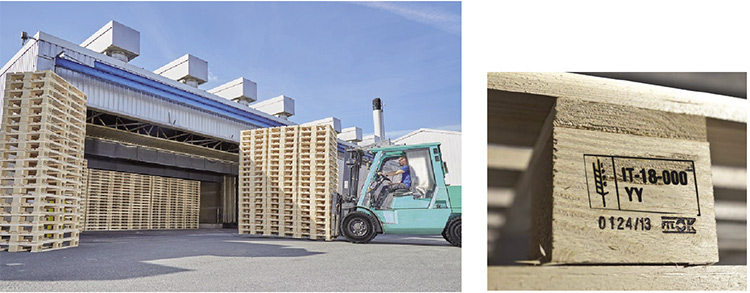The 10 recommendations from Conlegno
In support of Italian exports, the Cork Wood Services Consortium suggests how to improve the phytosanitary quality of shipments, with the aim of reducing the rejection of goods at the points of entry of importing countries.

To reduce the phytosanitary risk of pallets and containers, avoiding the re-contamination of the Cargo Transport Unit during its handling in the distribution chain, the Conlegno guidelines lay down that, when accepting the wooden packaging, compliance with the ISPM Standards should be verified, through the presence of the IPPC/FAO Fitok brand and the related documentation. Random inspections at the time of delivery need to be carried out, making sure that there are no harmful organisms or signs of infestation such as holes or tunnels.
The CTU must be stored at an adequate distance from infested habitats or colonies of pests and in areas free from risk of contamination by vegetation, soil and stagnant water. Methods of control need to be established over the site boundaries (if bordering meadows, flowerbeds and uncultivated areas); periodic disinfestations should be scheduled, adopting specific measures regarding the species, in the event quarantine from harmful organisms from importing countries is established.
The presence of a suitable, intact and easily cleanable flooring should also be established, along with the application of the FIFO (First IN, First OUT) principle. Checks should also be carried out on the efficiency of the container closing systems (making sure that the packaging is positioned in such a way as to allow the visibility of the IPPC/FAO marks).
Last but not least, the photographic documentation of the packaging and the complete load at the time of closing and the correct training of the personnel complete the recommendations

















